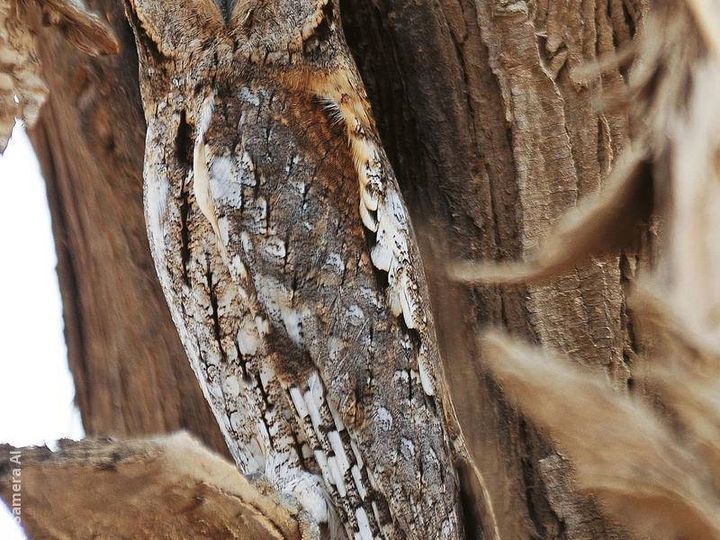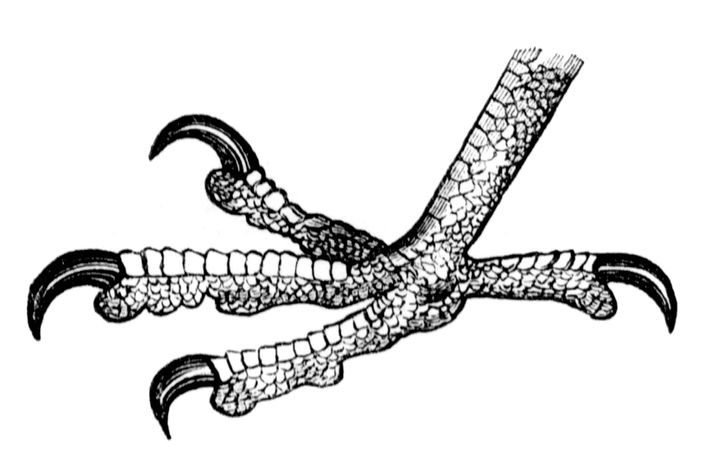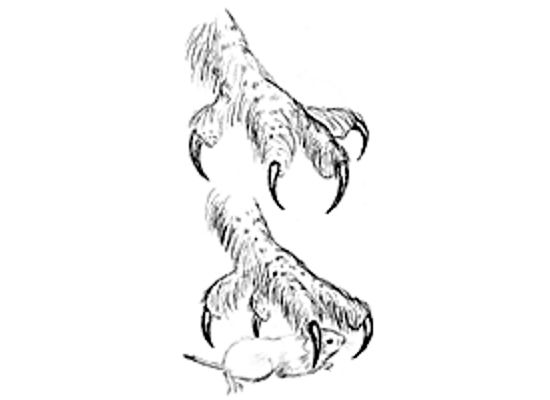Why are owls so different from other bird species? originally appeared on Quora: the place to gain and share knowledge, empowering people to learn from others and better understand the world.
Answer by Stefan Pociask, wildlife researcher, on Quora:
It’s sunset, and Harold the Red Tailed Hawk has had a long day watching over his field on the edge of the forest. Not a particularly successful day, but he did catch two mice in the grass. Time to call it a day. As he approaches the time-clock to check out of the day-shift and go home, he sees Oscar the Great Horned Owl approaching.
“How’s it going, Harold? Good day?”
“Eh... so-so. There’s a rabbit in the NW corner that got away from me.”
“Amateur. I’ll take him out tonight.”
“I’m sure you will Oscar. Good night, bud. Give em hell.”
“Get some sleep Harold.”
They both punch the time clock. The hawk goes to sleep, the owl goes to work.
The territory of both of these predatory birds is the same field. They share it… one during the day-shift (the diurnal hawk), and one during the night-shift (the nocturnal owl). This scenario is another beautiful example of evolution at work. In particular, it’s call niche differentiation. The world is dark half of the time. Nature found a way to make full use of all twenty-four hours by assigning different animals to different times of day. We have the diurnal day hunters, the nocturnal night hunters, and just to make sure to cover the gaps… the crepuscular dawn or dusk hunters. Each has physically adapted to be at his best during certain hours.
The owl has physically changed from his long-ago ancestors, in many ways, to fill their special niche of darkness. We’ll start with the eyes. A hawk is nearly as blind as you and I during the night. An owl’s eyes are much, much bigger than any hawk’s eyes, in order to gather more light from the moon and stars. The eyes of a three pound Great Horned Owl are the same size as the eyes of a three hundred pound man! The eyes take up nearly all of the room inside an owl’s skull. An owl’s eyes aren’t even sphere shaped. They are elongated, shaped like a bulging barrel with rounded ends. This gives them a maximum distance between the front and back of the eyeball. Now this causes one particular problem. Since they aren’t shaped like a ball, they can’t shift from side to side, to look left or right. An owl’s eyeballs are fixed in place. This is why he must rotate his entire head to look left or right, and it’s why the neck bones allow it to swivel two-hundred and seventy degrees around. Most diurnal birds can’t go further than one-hundred and eighty degrees. Plus, owl eyes are on the front of the face, like a human’s; not on the sides of the head, like other birds of prey. This makes for excellent binocular vision.
Owl hearing is also adapted to work at night. One ear is higher than the other so that they can triangulate to the exact spot of any noise in the dark. I’ve explained this here: Stefan Pociask's answer to Are all life forms relatively symmetrical?
Also, unlike diurnal birds, their face is shaped like an acoustic dish or bowl that funnels all sounds right to their ears.
Feathers! Yes, they are special for night hunting as well. Owls have very particular feathers with fluffy edges that make less sound when flapping through the air. You can test this by holding all your fingers tightly together, as if saluting, and waving your hand very fast past your ear; very close to your ear, like swatting a fly. You will hear a whoosh sound. Now do the same with your fingers spread far apart. The sound will be much quieter (how many of you just smacked your ear by accident? Yeah, I know… it stings!) This is the way that owl feathers allow them to fly silently in the dark.
Speaking of feathers… when our friend, Oscar the Owl goes to sleep during the day, he is highly vulnerable to getting attacked and eaten in his sleep, by any number of daytime carnivores. He’s pretty defenseless while just sitting there in broad daylight, fast asleep. So, unlike diurnal birds, owls have evolved an incredible ability to hide, with camouflage. Check out this guy: [1]

Or this one: [2]

It’s not difficult to imagine how this particular trait evolved. Obviously, the owls who were not born with excellent camo, all got eaten up in their sleep! It only left those who could “hide in plain sight” the best, and the camo kept getting better and better. Now they are invisible and can rest easy during the day.
Next… feet. Here is a hawk’s foot: [3]

Here is an owl’s foot: [4]

The difference is obvious: three i n front and one in the rear for a hawk vs. two in front and two in the rear or three in front and one in the rear for the owl. An owl has the option to switch it up! This gives the owl an advantage of a better grip, when conditions are dark. Also, it gives an advantage to an owl’s favorite killing method… crushing. Owls mostly land on top of prey and stay on the ground while their dinner dies in their grip. Hawks will more frequently swoop down and lift off with their prey, not necessarily crushing it to death right away. Owls normally remain silent during a kill, since they are on the ground and vulnerable. So they need a fast way to kill. The two-by-two talon arrangement helps with this. They can safely make kills at night this way, then swallow their prey whole, if they can. It’s all about silence. A hawk will fly away with the food, so they aren’t that worried about a super quick kill. An owl’s crushing force is multiple times that of a hawk, of equal size. A Great Horned Owl could puncture your skull with all four talons. A Red Tailed Hawk can’t do that.
The bottom line is that owls are different because they live or die based on three things: darkness, silence and hiding (hmmm… ninjas?). Everything about them has evolved toward these three concepts, that other birds don’t worry about.
Owls are extremely specialized creatures. They work second shift. No other bird can do what they do, as well as they do it. These are the things that make an owl so different. There are other nocturnal birds, of course. But none are as perfectly adapted to be such deadly efficient killers. They are pretty cool dudes! As far as the original question comparing them to other bird species… well, they are as different as night and day!
IMAGE CITATIONS:
[1] Graham McGeorge 2013, Natural Camouflage Leaves This American Owl barely Visible at the Entrance to its Nest!!!
[3] H. Alleyne Nicholson, An Introductory Text-book of Zoology(Edinburgh:William Blackwood and Sons, 1871) 152 Falcon Foot | ClipArt ETC
[4] The Alaska Owlmanac: A guide to the identification, habits, and habitat of ten owl species found in Alaska. Alaska Department of Fish and Game
This question originally appeared on Quora - the place to gain and share knowledge, empowering people to learn from others and better understand the world. You can follow Quora on Twitter, Facebook, and Google+. More questions:
